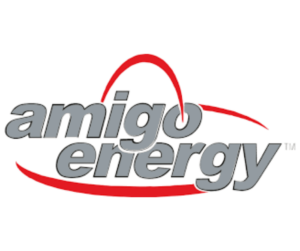Boiling water reactors (BWRs) are a class of water-based boilers used for power generation. After the hydroelectric power plant (or PWR), the boiler is the second most popular form of nuclear power. Both types are nuclear water generators Amigo Energy .
The main difference between a boiling water reactor and a water reactor is that in the first reactor, the water is heated, turning it into steam, then the turbine is driven. Finally, the reactor core is heated with non-boiling water. Hot water changes the temperature in the water system which is at low pressure. So it turns into steam and turns the turbine.
The principle of operation of the boiling water reactor
The concept of designing a commercial boiling water reactor is based on the following principles:

1- The core of the reactor vessel generates heat.
2- When pure water (reactor coolant) rises from the core and enters the heat, a mixture of steam and water is created.
3- The mixture of steam and water leaves the upper part of the head. It then enters a two-phase water separator, where water droplets are removed before the steam enters the steam line.
4- The steam line delivers the steam to the turbine and turns the turbine to produce electricity. The steam left in the condenser is allowed to turn into water. Water is pumped from the condenser through a pump and then headed back into the reactor vessel. The main unit consists of a heating element that circulates water through an electric pump.
Pumps and other plant equipment are powered by an electrical network. In case of external power failure, additional pumps can provide emergency cooling water, which can be provided by on-site diesel generators. Other security systems also require lighting. Water heaters have between 370 and 800 fuel assemblies.
Boiling water heaters use normal water (hot water) as the heating medium and the regulator. In a steam reactor, the water in the reactor core is boiled under a pressure of 75 atoms at a temperature of 285°C. The steam produced is used directly to operate the turbine. steam. When the steam is exposed to the core, some radioactive contamination of the turbines occurs. But this did not last long and the sailing was soon closed. Boiling water reactors may represent the simplest configuration of nuclear reactors because there is no additional need for heat exchangers or steam generators. However, the internal structure is complex. Steam pressure and temperature are low compared to modern power plants, steam turbines are usually large. Boilers have a capacity of up to 1400MW and an efficiency of around 33%. Water boilers use enriched uranium as fuel. The fuel is fed into the reactor in the form of uranium oxide pellets and zirconium alloy tubes. There are no less than 140 tons of fuel in 75,000 fuel rods. Fueling the reactor involves removing the top of the reactor. His head is held underwater. Water protects workers from radioactivity. The boron control panel enters the core from the bottom of the reactor.
As in all generators, the fuel rods removed from the core of the generator are radioactive and continue to generate energy until a few years. Therefore, at least before being shipped for processing or final storage, they are kept in well-controlled ponds in factories.
